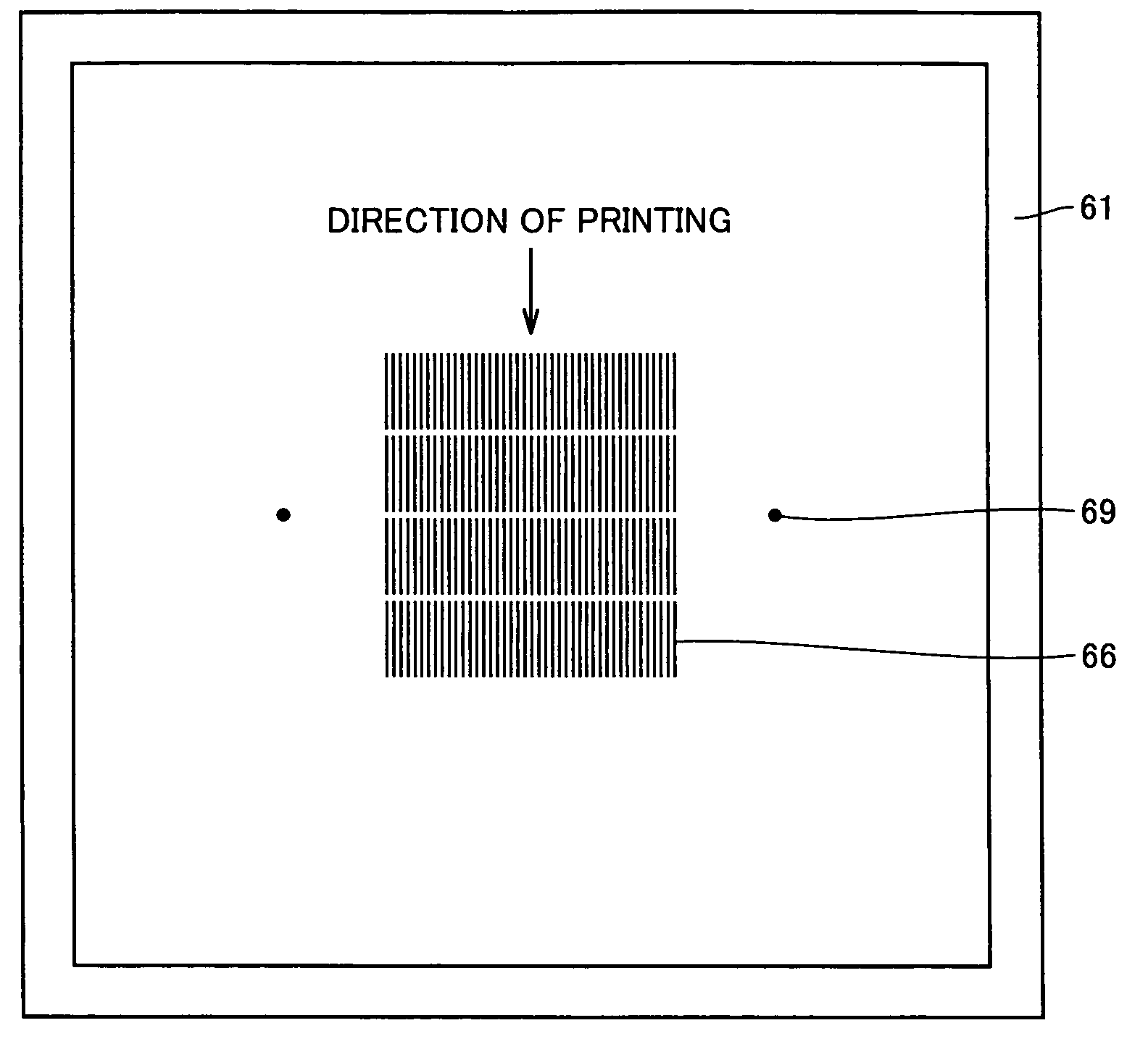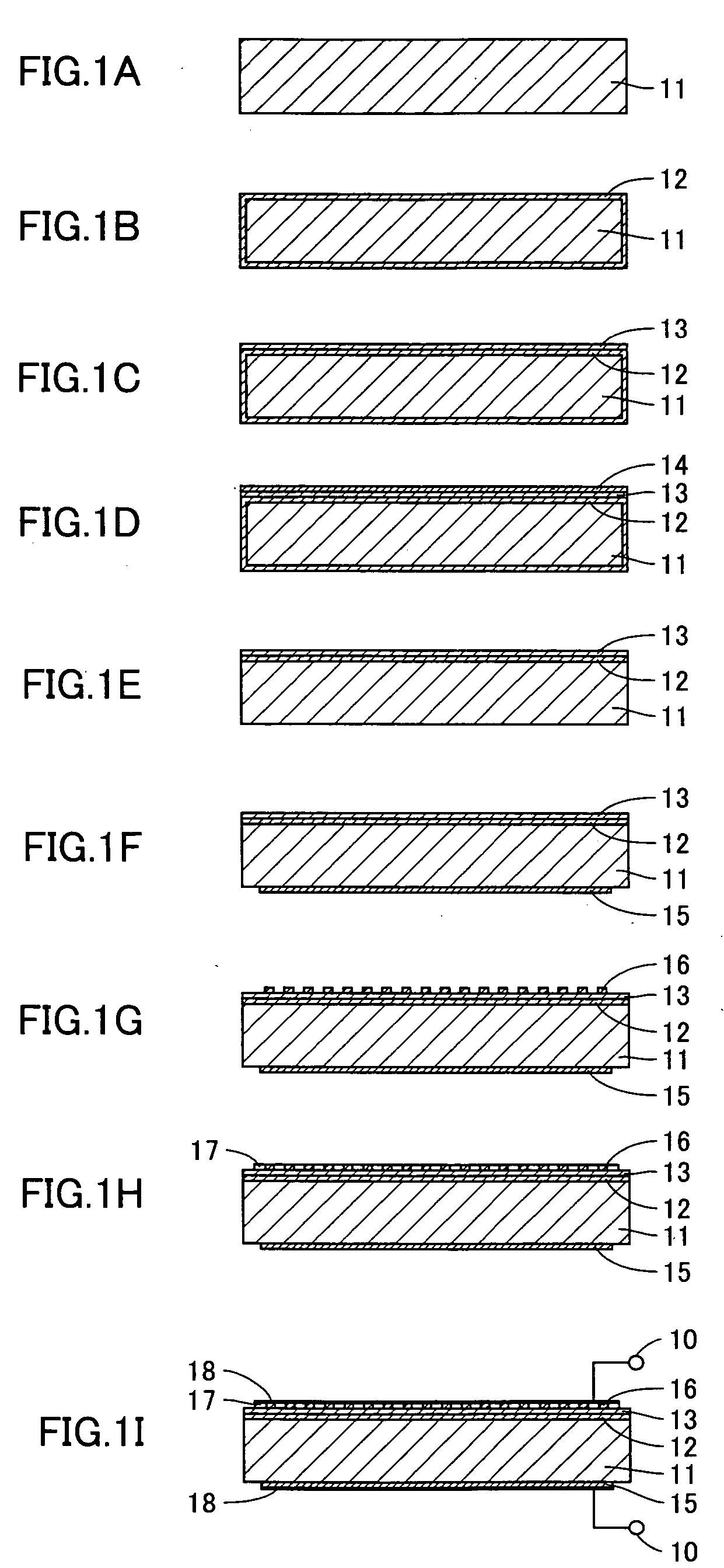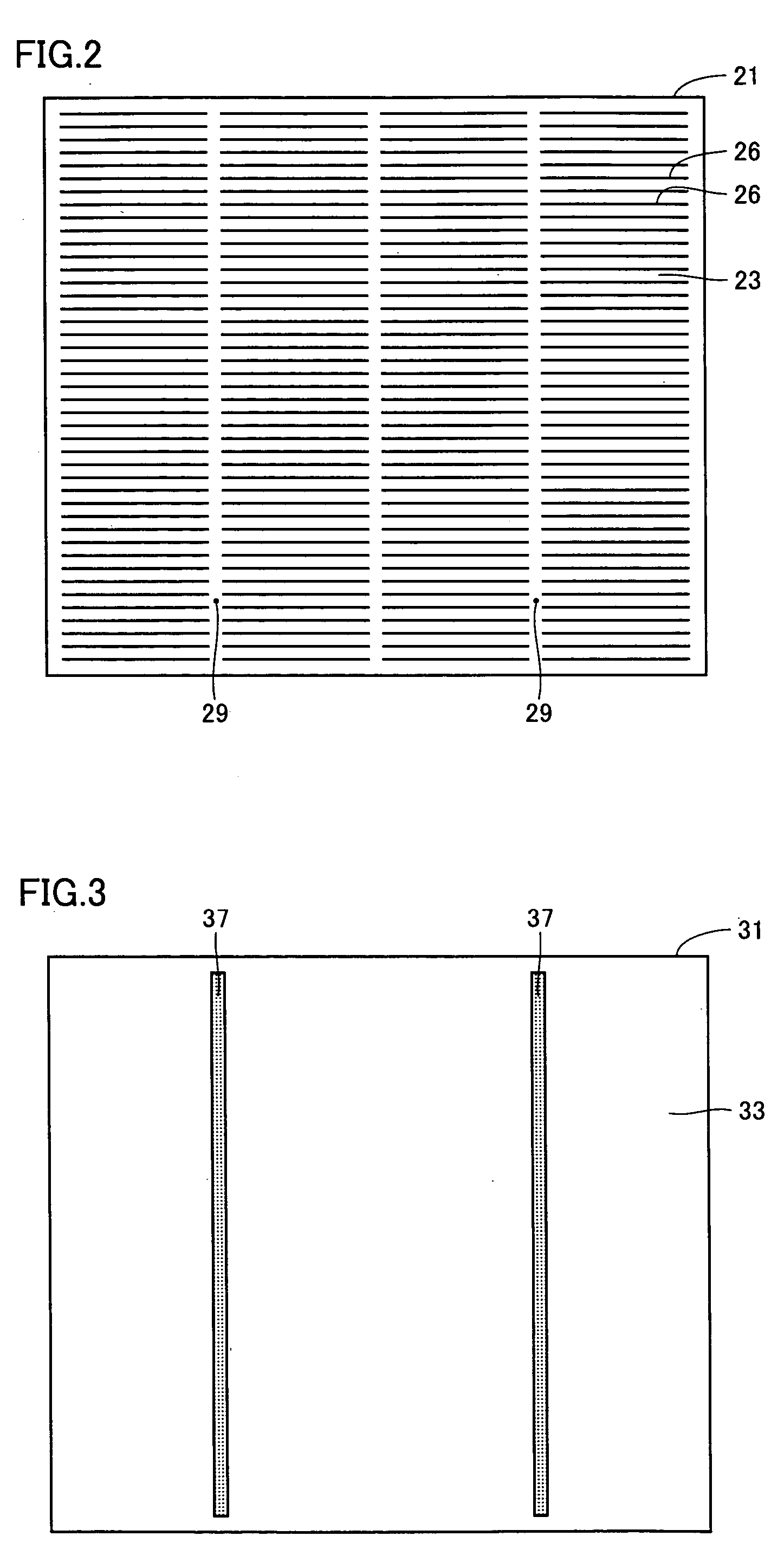Method of manufacturing solar cell and solar cell manufactured thereby
a manufacturing method and technology of solar cells, applied in the field of solar cells having a pn junction, can solve the problems of poor solar cell electric characteristics, reduced light-receiving area contributing to power generation, and particular low open-circuit voltage, and achieves small series resistance, small width, and large thickness
- Summary
- Abstract
- Description
- Claims
- Application Information
AI Technical Summary
Benefits of technology
Problems solved by technology
Method used
Image
Examples
example 1
[0041] The solar cell according to the present invention was manufactured in the steps shown in FIGS. 1A to 1I. First, the surface of a p-type silicon substrate 11 was treated with a high-temperature sodium hydroxide aqueous solution, so as to remove a surface damage layer (FIG. 1A). Then, an n+ layer (high concentration n layer) 12 was formed on the entire surface of p-type silicon substrate 11 through vapor phase diffusion of POCl3, as shown in FIG. 1B. Thereafter, the surface of n+ layer 12 was washed with hydrofluoric acid, and an antireflection coating 13 composed of silicon nitride was formed on the light-receiving surface side with plasma CVD (Chemical Vapor Deposition), as shown in FIG. 1C. Then, as shown in FIG. 1D, a resist ink layer 14 was formed on antireflection coating 13 by printing. Thereafter, a junction was separated by chemical etching with fluoro-nitric acid, and resist ink layer 14 was removed by a solvent (FIG. 1E). After the resist ink layer was removed, a sil...
PUM
 Login to View More
Login to View More Abstract
Description
Claims
Application Information
 Login to View More
Login to View More - R&D
- Intellectual Property
- Life Sciences
- Materials
- Tech Scout
- Unparalleled Data Quality
- Higher Quality Content
- 60% Fewer Hallucinations
Browse by: Latest US Patents, China's latest patents, Technical Efficacy Thesaurus, Application Domain, Technology Topic, Popular Technical Reports.
© 2025 PatSnap. All rights reserved.Legal|Privacy policy|Modern Slavery Act Transparency Statement|Sitemap|About US| Contact US: help@patsnap.com



